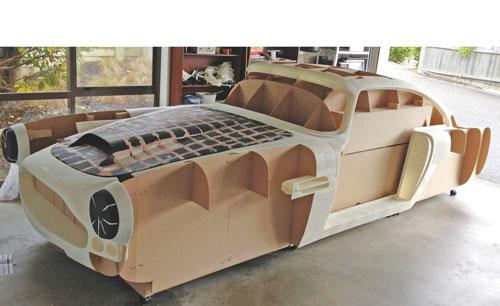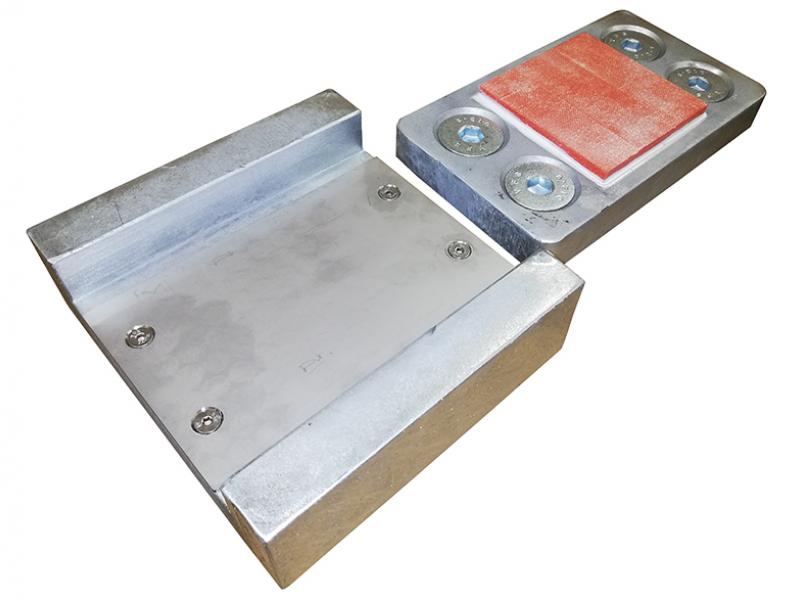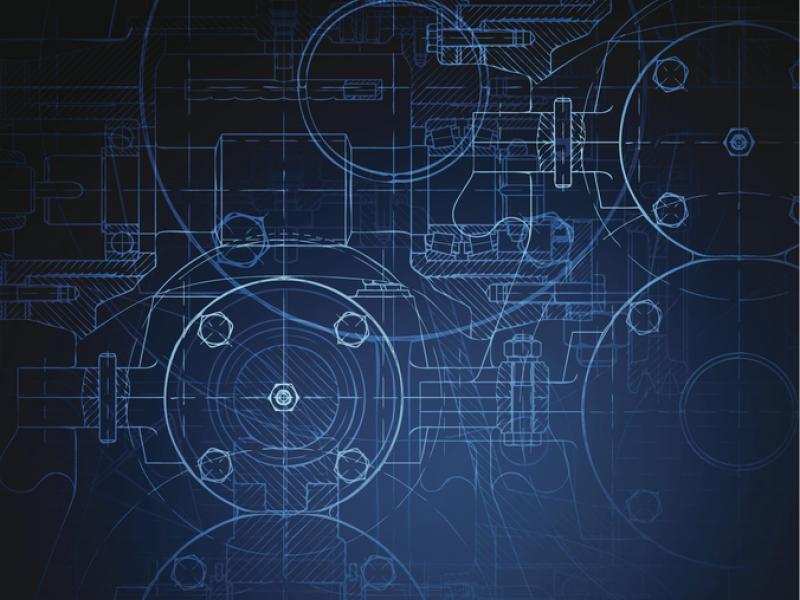Readers of a certain age may remember the 1976 Johnny Cash hit One Piece at a Time. It was a song about an autoworker building a Cadillac from parts sneaked out of a GM car plant.
Aucklander Ivan Sentch is following in Johnny Cash’s footsteps. He doesn’t have a guitar, nor does he sing, but the Browns Bay computer programmer does have a 3D printing machine in his garage that’s running 24/7. Bit by bit, it is producing an Aston Martin – 100sq mm blocks at a time.
He downloaded the specs off the internet but isn’t sure if the drawings are of a full-sized Aston Martin car, a scaled up model or if they were drawn by hand.
“The drawing is very clean, so I think it was done by hand,” he says.
No matter, he reckons that in five years’ time he’ll be driving around in a head-turning heavily modified Skyline that will look – at first glance at least – much like the car driven by James Bond in the movie Goldfinger. That was a DB5, Ivan is building a DB4.
“It won’t have an ejector seat,” he says. “But it will probably end up with a BMW V12 engine in it.
“I have been toying with making it an electric car, but the 100ks it could travel before the batteries needed a recharge is putting me off – I work 44k from home. I haven’t completely discounted it, but it wouldn’t be any good for long drives if it was electric.”
The process 32-year-old Ivan is following is to create a plug from which a mould will be created. Then he will use that to fabricate the bodywork of the car that will eventually be sprayed gun metal grey. He reckons he’ll need 2500 tiny blocks to complete the project, and hopes to have it on the road by 2018.
“It’s only a project car, so there’s no rush,” he says.
In all, his budget 3D printer, a US$500 Solidoodle, is being used to make the car’s bonnet, boot, doors, shell and dashboard. It’s been running since January – morning, noon and night – and he estimates he’ll have used about $3000 worth of plastic when he turns it off. It sounds a lot, but is a big saving on the $12,000 to $15,000 it would cost for an Aston Martin kit car.
“It was the cheapest 3D printer I could find,” says Ivan. “I set the printer off in the morning and so it isn’t really consuming too much of my time at the moment. Just a few hours at the weekend.
“I use model glue to bond each block together. It’s a big experiment, I don’t know whether it will be good or bad, but we’ll see how it goes.
“All that really matters is that the genuine Aston Martin glass I am buying fits okay – that’s the only thing I can’t make or modify. But I think what I am making should be close enough to the genuine article for it all to fit together.”
Sourcing the glass is the first thing Ivan did “if I couldn’t get the glass, then the project wasn’t going anywhere”. Naturally, he’ll be using wire wheels to complete the look.
Ivan reckons breaching Aston Martin’s intellectual property isn’t an issue because he is making the bodywork for a ‘host’ car and doesn’t intend to sell it or the moulds.
“I’m not intending to make any money out of this, so I don’t think Aston Martin will be interested – there are also firms around who will sell you Aston Martin body kits….”
This isn’t Ivan’s first foray into building a car, 10 years ago he built a replica 1962 250GTR Ferrari using a kit car package. He still has the car today.
“My aim now though is to build a bang-on replica of the DB4,” he says. “I think the 3D printer will be working for another nine months, churning out square blocks – so I’ll get the plug to make the mould next year.”
One piece at a time
General Engineering
Tuesday, 08 October 2013






